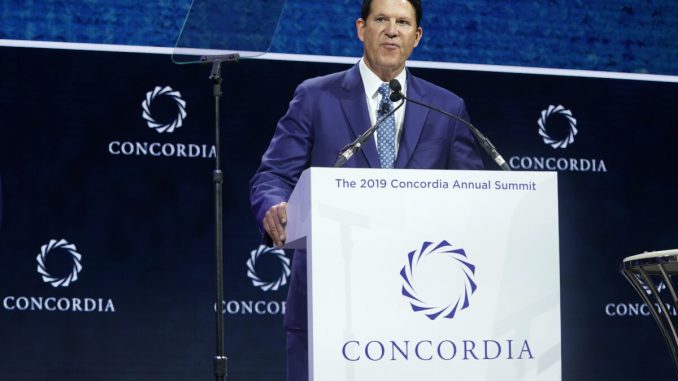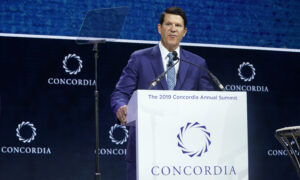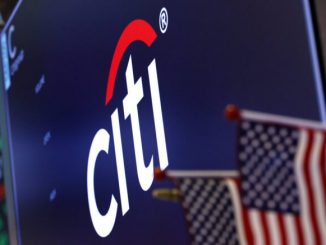

“Speed now is the number one currency in business today and you need that momentum for that digital transformation…And the big, they no longer eat the small. The quick eat the slow,” said former Under Secretary of State Keith Krach, as he addressed the need for 5G technology.
This emerging technology is not only 10 times faster, with the possibility of up to 100 times faster in the future, it also increases bandwidth, allowing for more connected devices at a time. No more spotty service in busy areas. An essentially immediate connection on calls and texts. A faster and easier connection to Cloud platforms like Amazon Web Services (AWS) and Microsoft Azure.
It is clear why 5G is so desirable and why companies around the world are scrambling to produce the equipment needed to operate it. But with speed comes risk, and in this case, the risk comes from technology giant Huawei and the Chinese Communist Party.
According to Huawei’s own data, by February 2020, they had contracts with 91 countries for 5G technology. 47 of those are located in Europe, and most of them are allies of the United States. It is well understood that Huawei is deep in the pocket of the CCP and that their international reach and resources are far ahead of virtually all telecommunications corporations. It is known the world over that it is dangerous to do business with them. But when a telecommunications giant grows this large, can it be stopped?
Keith Krach believed so and set out to do just that. Undeterred by the failing system he inherited, a system where the only strategy was warning companies and other countries to stop working with Huawei, he believed that a better way would lead to a better result:
“We must have had more than 60 bilateral meetings with my foreign counterparts: economic ministers, foreign ministers, finance ministers. It just seemed like most countries were terrified of China. Nobody even wanted to use the words ‘China’ or ‘Huawei.’ The big ah-ha came when I asked about their relationship with China. They’d say, ‘well they are an important trading partner, but’… then they would look both ways and lean in and softly say… ‘but we don’t trust them.’”
Trust, he decided, should be the cornerstone of the United States’s national 5G strategy.
And it is that strategy, and the resulting damage to Huawei’s 5G momentum, that are revealed in the new documentary “The American Dream Takes on China Inc.” In our first installment, “5G Trifecta,” we follow Krach’s journey from his father’s machine shop where he learned resiliency during tough economic times and the importance of fairness in competition, to his role at GM and his discovery that failure is the best teacher, and finally to his role as Under Secretary of State and his mission “to develop and operationalize a global economic security strategy to drive economic growth, combat economic aggression and maximize national security.”
It was in this role that he set his eyes on 5G technology and China’s involvement in it. The natural next step was to look at industry leader Huawei and determine their route to success, the risks in allowing that success to continue unchallenged, and vulnerabilities that could be exploited to decrease their international influence.
Huawei’s success came from early contracts with the Chinese army and millions in state financial backing followed by the integration of their equipment and services into the nearly 800 smart cities in China. It was strengthened through more covert methods, including forced technology transfers and technology theft, including the well-documented case involving theft of router software from Cisco.
The covert moved into the realm of sinister in the minds of Washington officials who feared that Beijing, through Huawei, could control and even deny the United States and its allies access to the 5G networks that make global commerce and the projection of military power possible. But Krach saw more than fear at the heart of his work. Memories of the lean times for his father’s mechanics shop, when a downturn for automotive companies meant that theirs “just went absolutely flat. I remember for a year, it was just my dad and me, we were the only employees and to watch how tough that was but also to watch his resilience in terms of that” helped him make sense of the importance of industry in strengthening America as a country.
Having an established and successful 5G manufacturing industry in America was equal in Krach’s mind to diminishing the risks involved in business relationships with Huawei. The results of his efforts are stunning. First, Krach and his team convinced Taiwanese chip giant TSMC to construct its $12 billion 5-nanometer semiconductor manufacturing plant in Phoenix, Arizona, the biggest onshoring in United States history and one that will bring with it 1,600 high-tech jobs.
Following that, Krach’s team worked with Congress to “put some serious funding into bringing our semiconductor manufacturing back to the U.S.” Their bipartisan efforts with Senator Corn and Senator Warner led to a unanimous House vote and a 96 to 4 Senate vote to approve $30 billion dollars in funding.
Krach believed that these two wins would lead to more onshoring of semiconductor companies, and his predictions are coming to pass. Samsung is expected to build a larger facility than TSMC’s, and S chip manufacturing has shown interest in moving facilities to America as well. Many proposals to do so already in the hands of those in Washington.
5G, according to Krach, will be the most important industry to U.S. national security, and it will take a continued effort by the leadership in Washington to build on the momentum gained through the efforts of Krach and his team and to protect American interests by continuing the 5G Trifecta strategy in order to further limit Huawei’s influence in the industry while strengthening America’s industrial ties to 5G technology.
For the full story on the inherent risks of Huawei dominating 5G technology, Keith Krach’s trust strategy used to successfully slow their momentum, and the emergence of America as a central figure in 5G manufacturing, watch “The American Dream Takes on China Inc: 5G Trifecta” premiering at 7 p.m. EST on April 30 on Zooming In China.






Be the first to comment